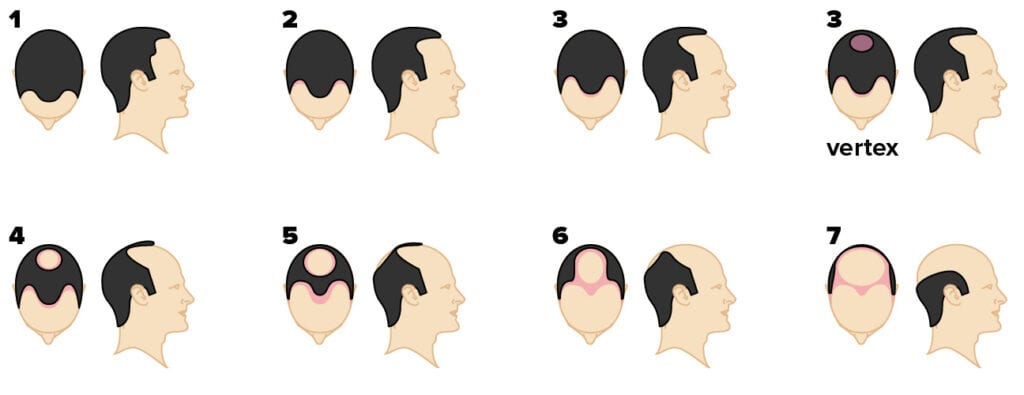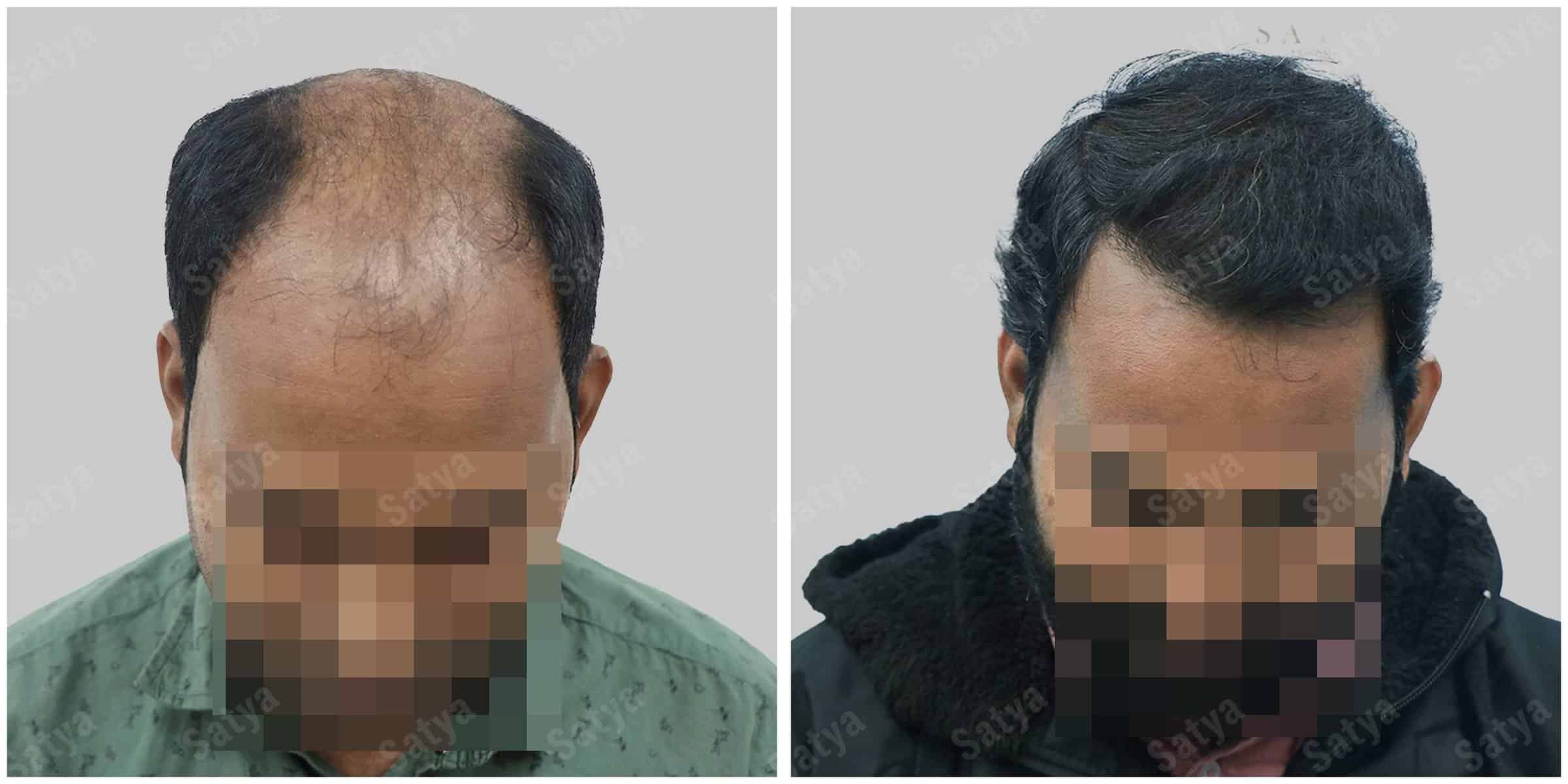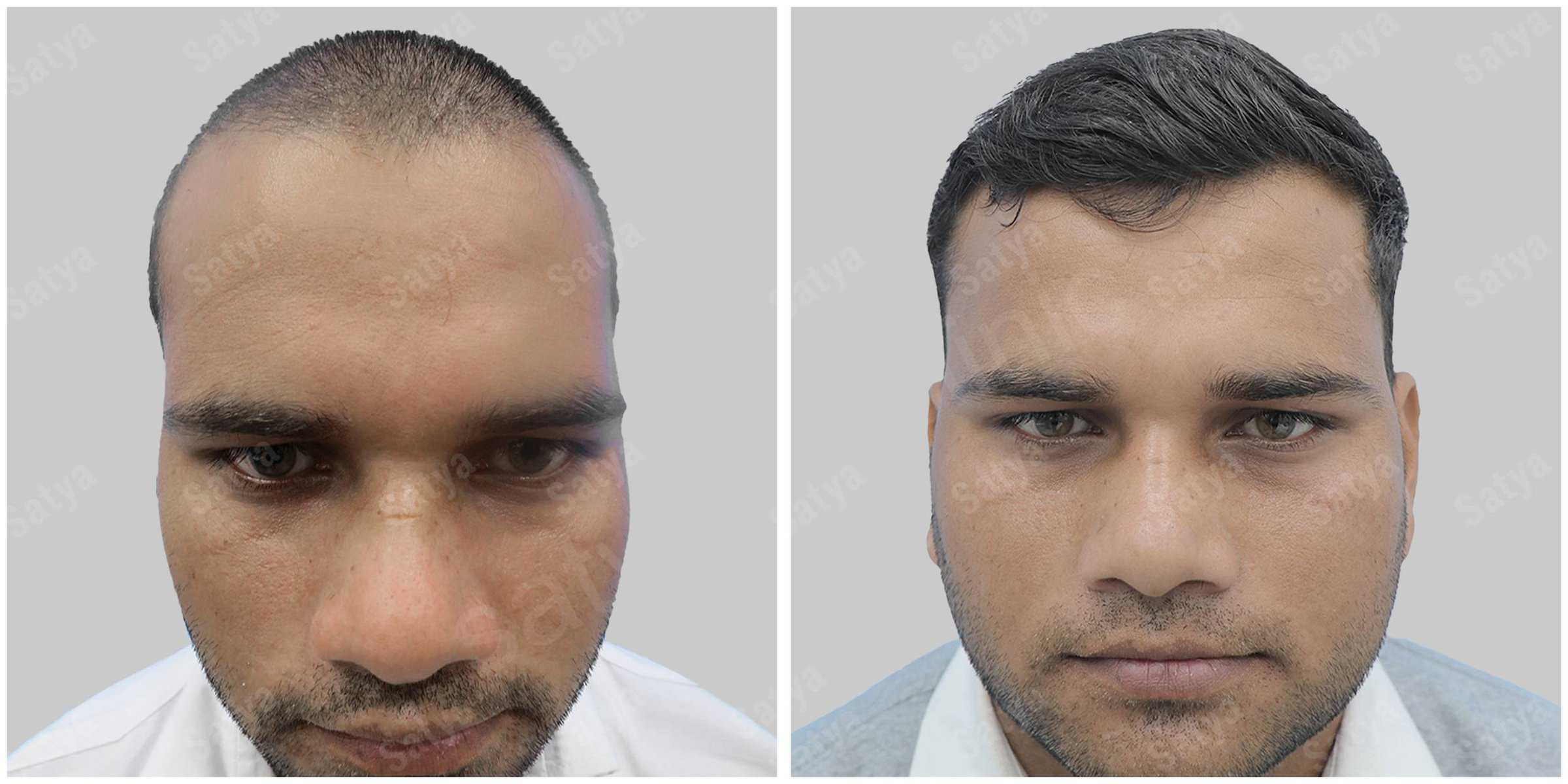Calculate your Hair Graft requirement
For determining your hair graft need for a transplant, the factor of baldness or area to be covered will generally come into play. The number of grafts required is based on individual needs and desired hair density.
Here's a general guideline to calculate your hair graft:
Norwood Scale: This scale makes it possible to determine the stage of male pattern baldness, from mild hairline recession (Stage 1) up to a highly developed bald patch. position on this scale can indicate the number of grafts required.
Graft Estimation: For grade 2 – 3 baldness 1000 to 2000 grafts, for grade 4 – 5 baldness 3000 to 4000 grafts, grade 6 – 7 baldness 5000 to 7000 grafts.
Follicular Unit: Grafts normally consist of 1-4 hairs per unit. The number of hairs required will determine the graft count.
Consultation with a Specialist: In-office consultation with a hair restoration specialist or surgeon is of utmost importance. They evaluate your individual pattern of hair loss, characteristics of your hairs and desired result to calculate the grafts required correctly.

Importance of hair density at donor area
Hair density of the donor area means how many hair follicles are found in a certain section of scalp, typically at back and sides. The donor site of hair transplants is found in this area because the follicles are genetically immune to balding.
Here's why it's crucial:
Sufficient Grafts: More follicular units can be harvested for transplantation from the donor area due to higher hair density. This is important for covering bigger bald spots or obtaining higher hair density in the donor site.
Natural Appearance: A greater hair density gives a more natural effect. When there are plenty of donor grafts in supply, the surgeon can give a more balanced and dense look to an area he or she has transplanted into, replicating natural hairstyle growth patterns.
Coverage and Results: Sufficient donor hair density also ensures better coverage of the recipient area for a thickness and fullness of growth. It can largely contribute to the success of the transplant and also overall aesthetic performance.
Future Hair Loss Management: It is imperative to preserve the donor area for possible future hair loss. While the transplanted hair is typically permanent, ensuring that the integrity of the donor site allows for other procedures in future when continued loss happens over some period.
Donor Area Preservation: Grafts should be extracted with due care while maintaining the natural look of donor areas. Ensuring donor area density means that it doesn’t look thinned out or depleted following a hair transplant.
How to decide hair transplant cost
The cost of a hair transplant can vary based on several factors:
Extent of Hair Loss: The more extensive the hair loss, the more grafts will be needed, which can increase the cost.
Technique Used: Different methods (FUT, FUE) have varying costs. FUE (Follicular Unit Extraction) tends to be more expensive due to its meticulous nature.
Clinic/Doctor Reputation: Experienced and reputable surgeons or clinics may charge more due to their expertise and successful track record.
Location: Costs can differ based on geographic location and the standard cost of living in that area.
Number of Sessions: Some may require multiple sessions, increasing the overall cost.
Additional Services: Post-operative care, medications, and consultations might be included in the total cost.

Our Results at a Glance
Book an appoinment
Consultation

Repair

Blog

Galleries





